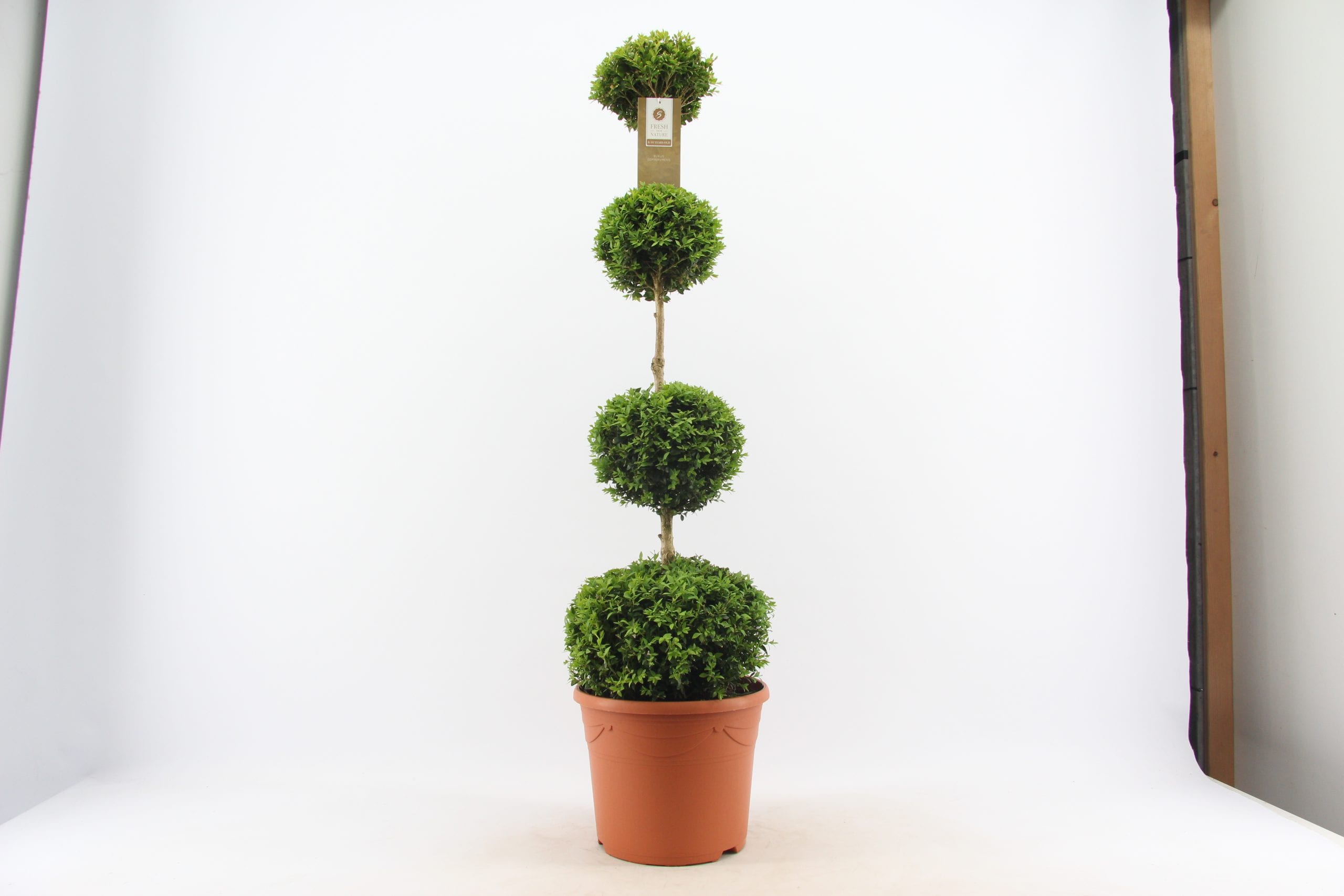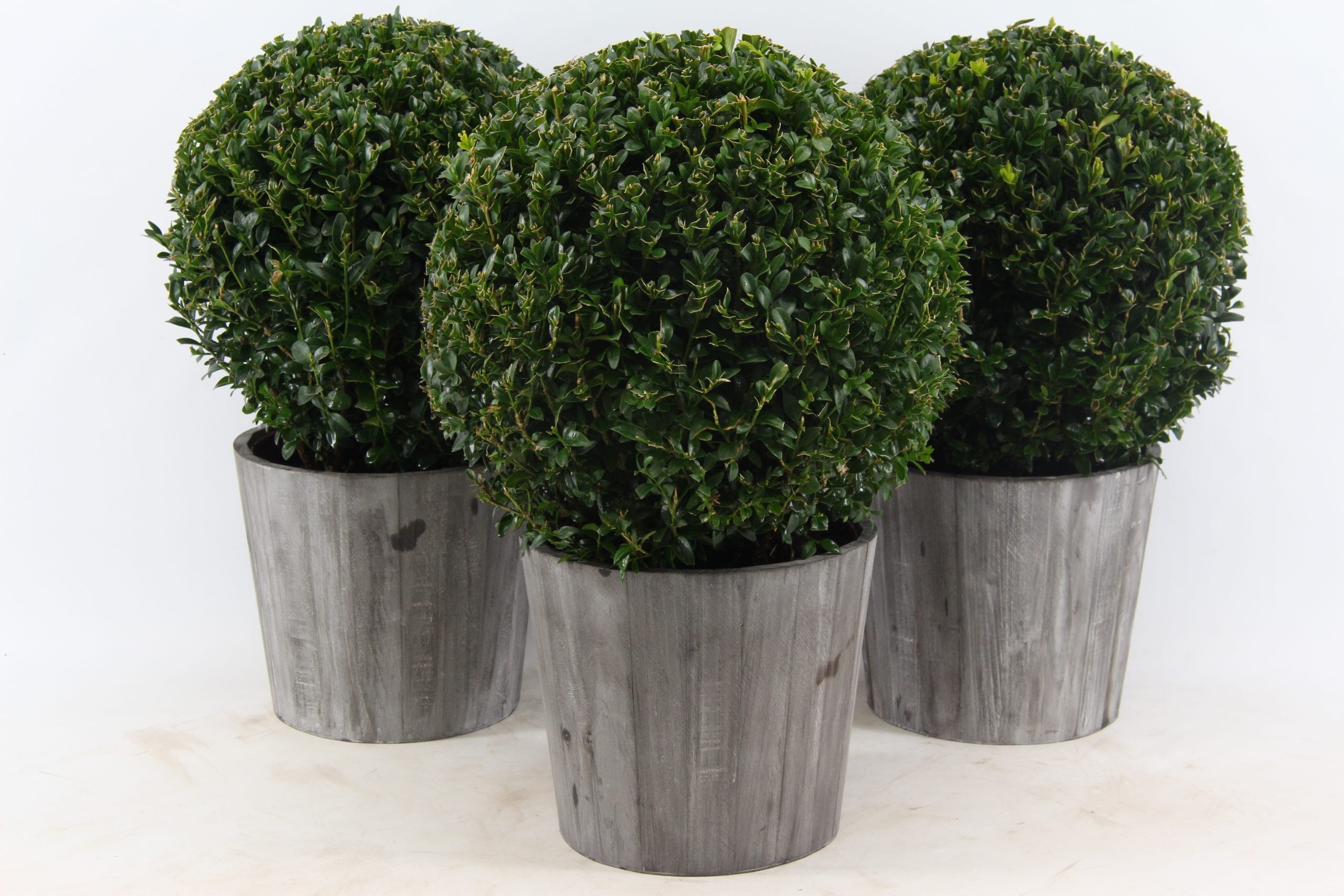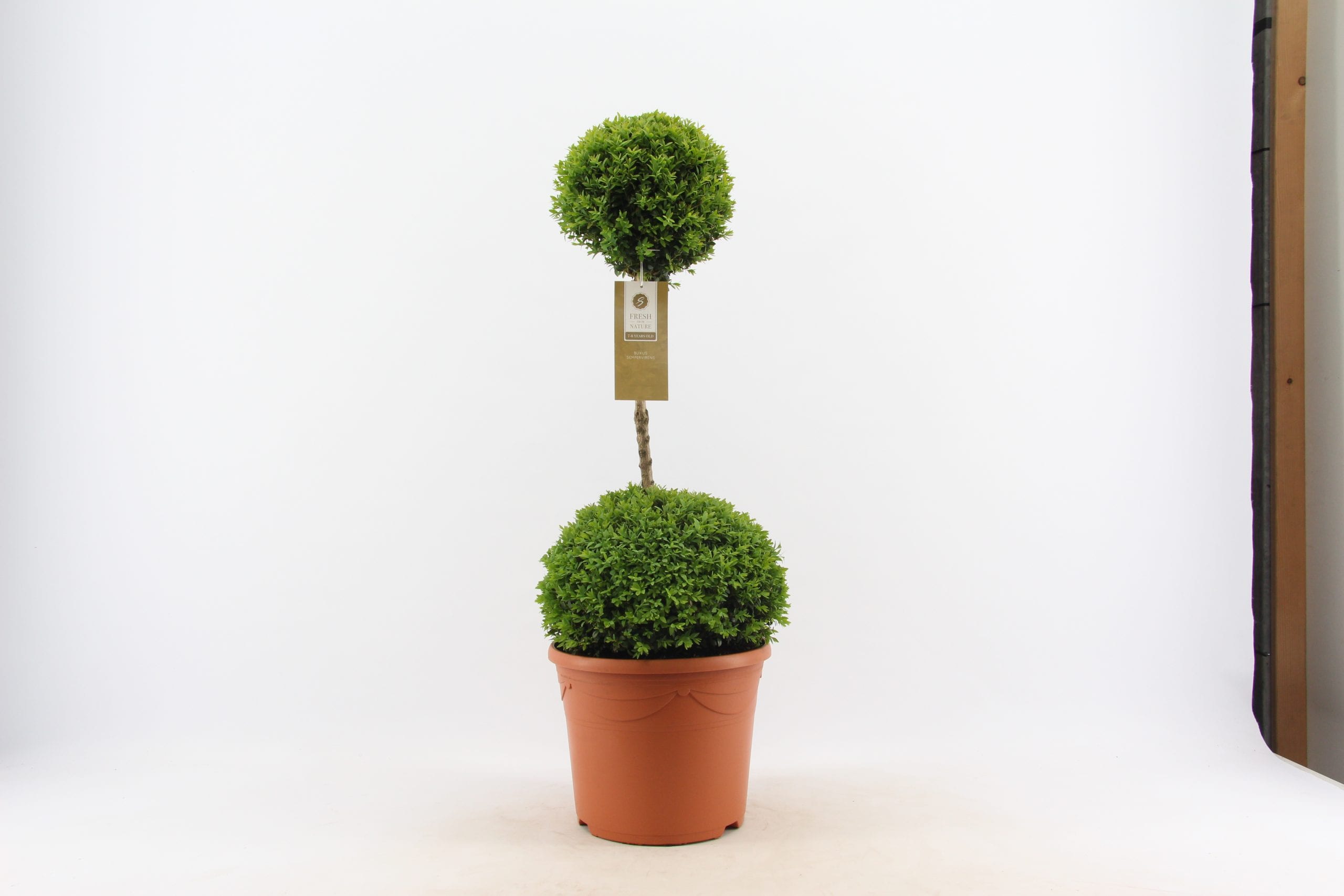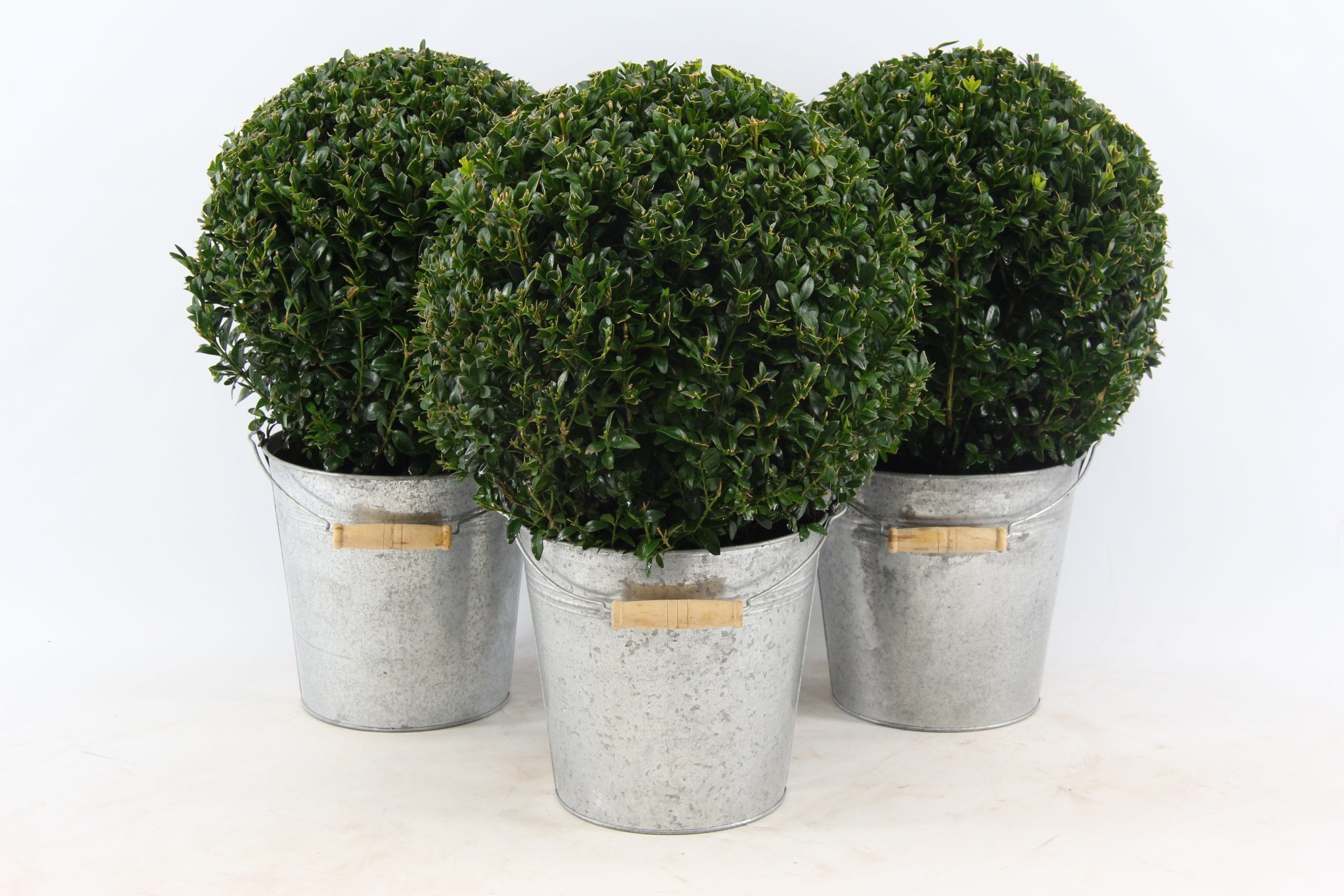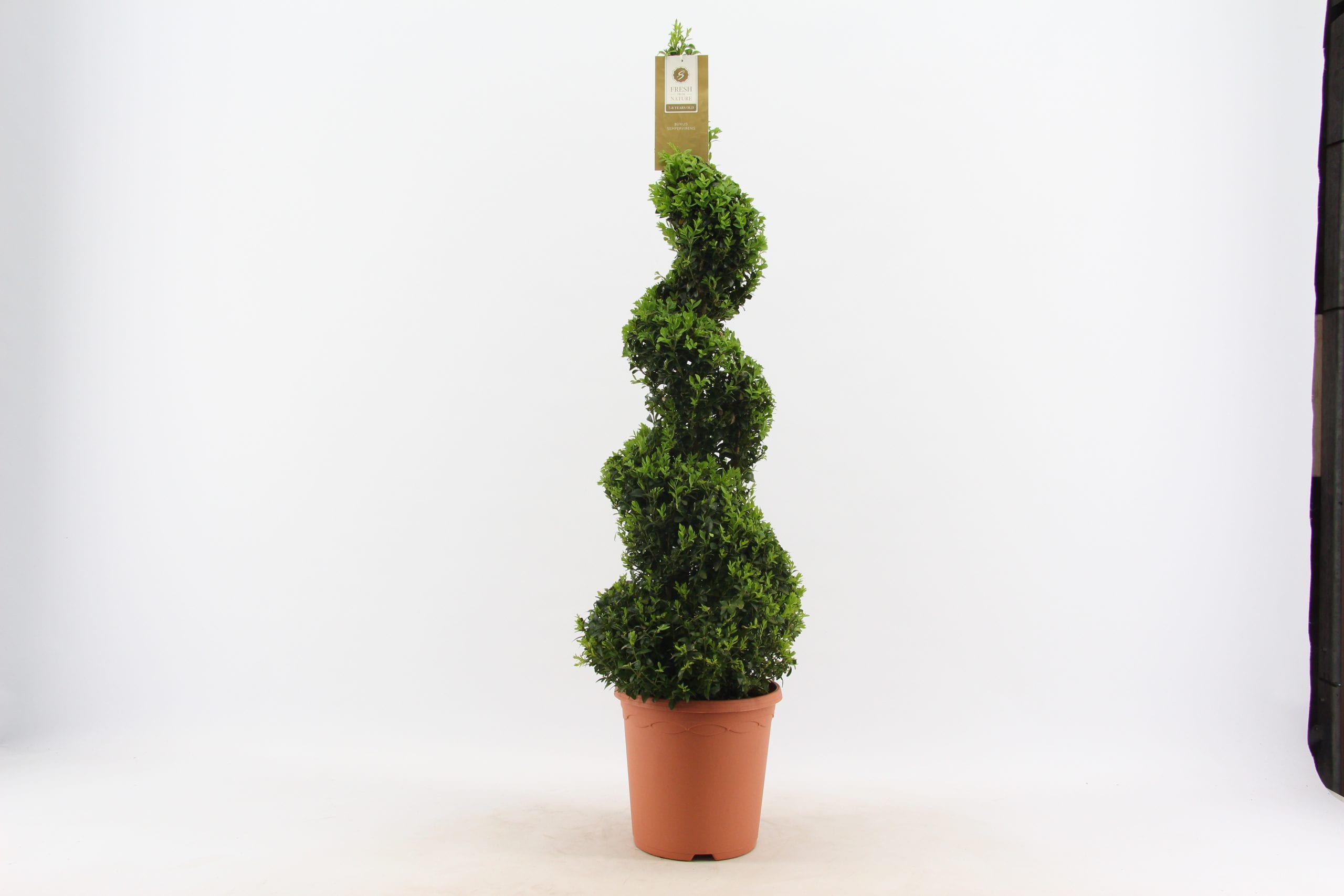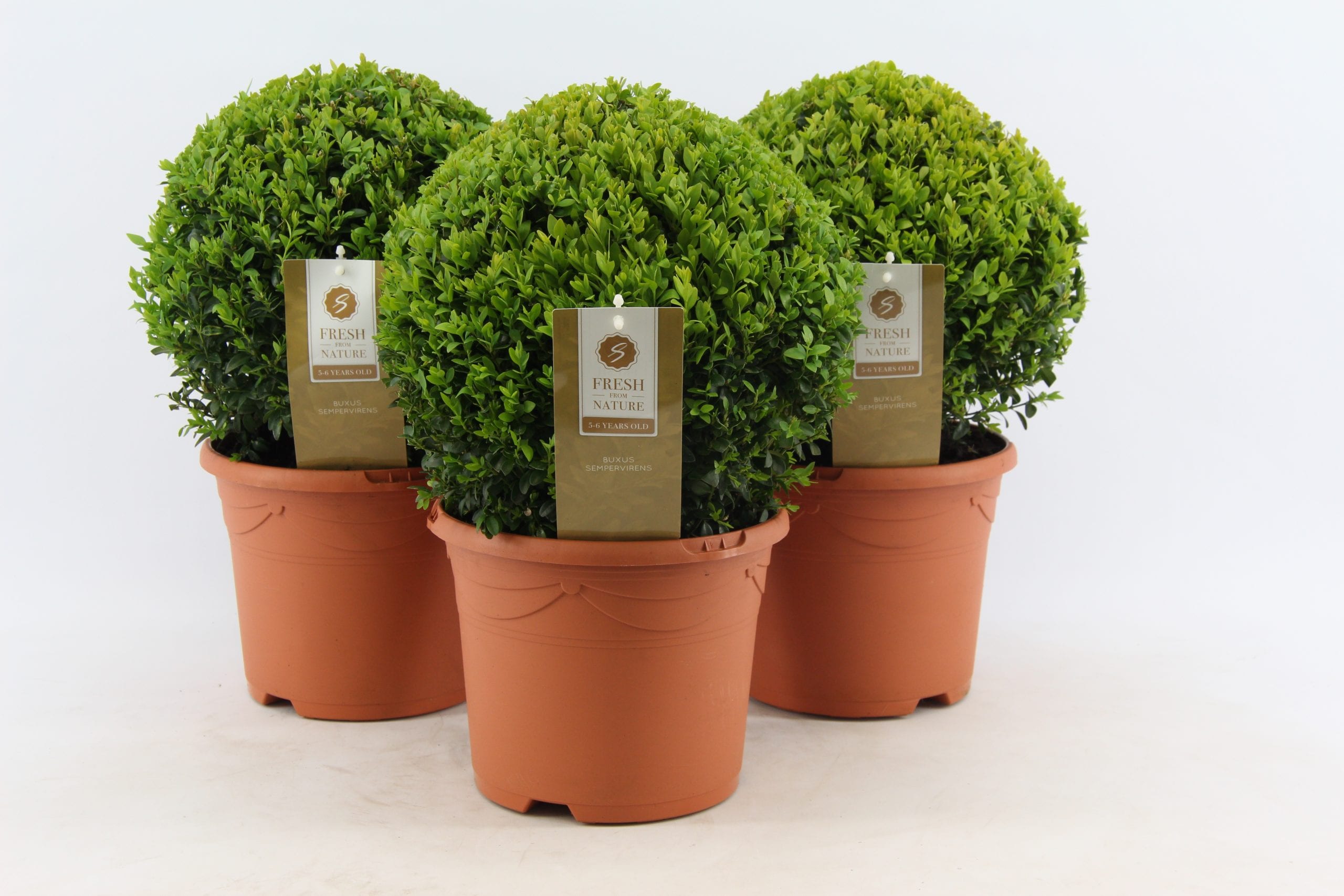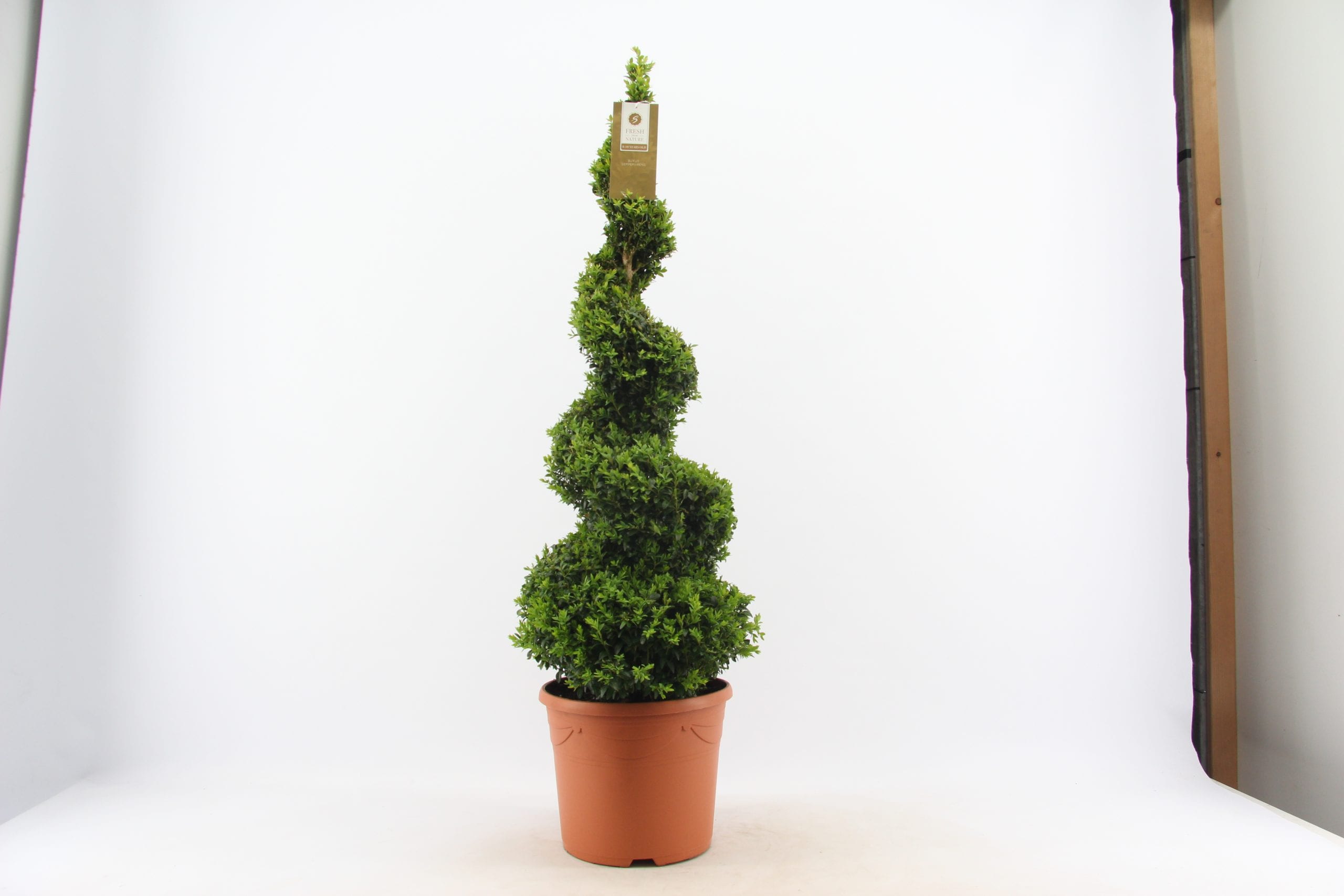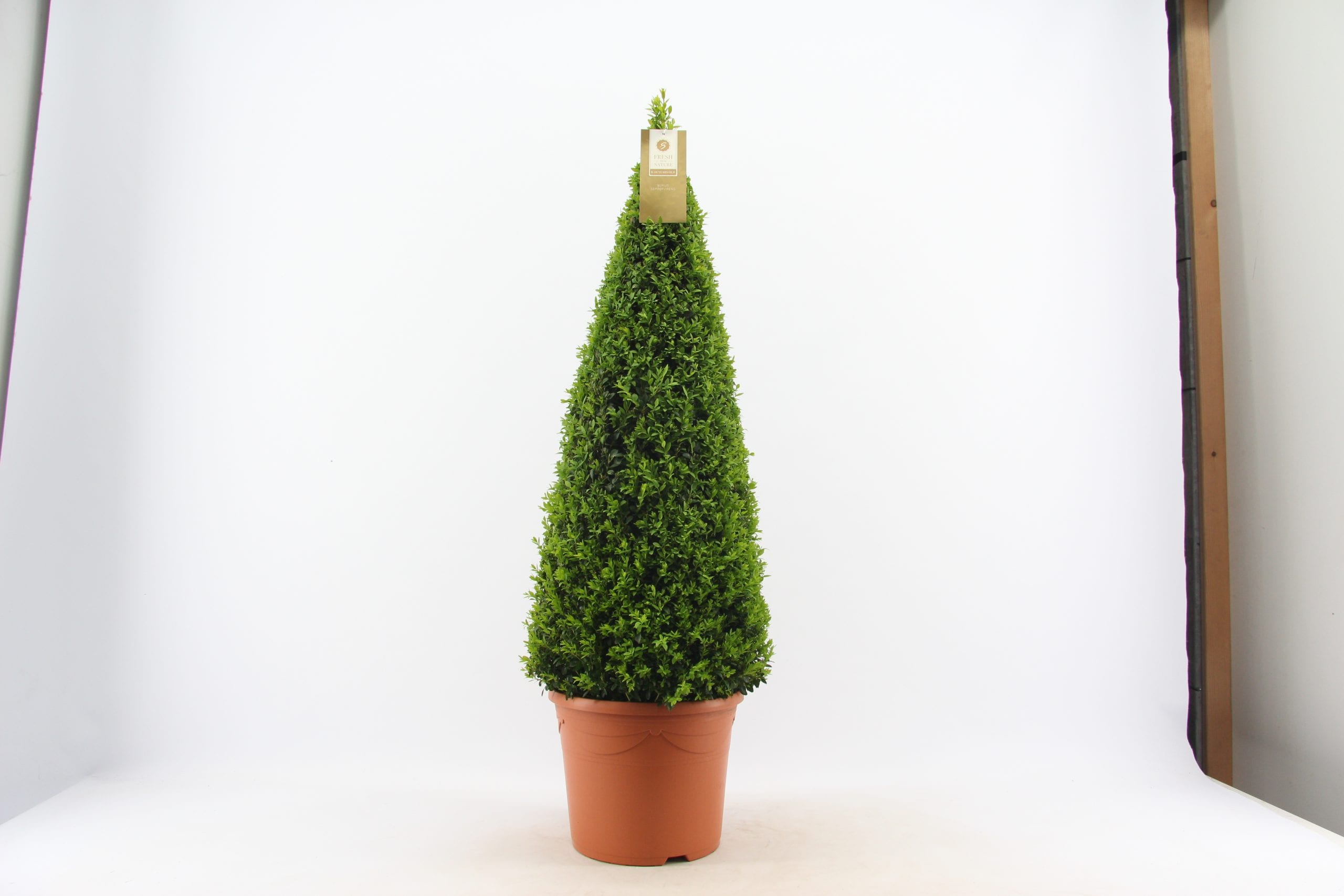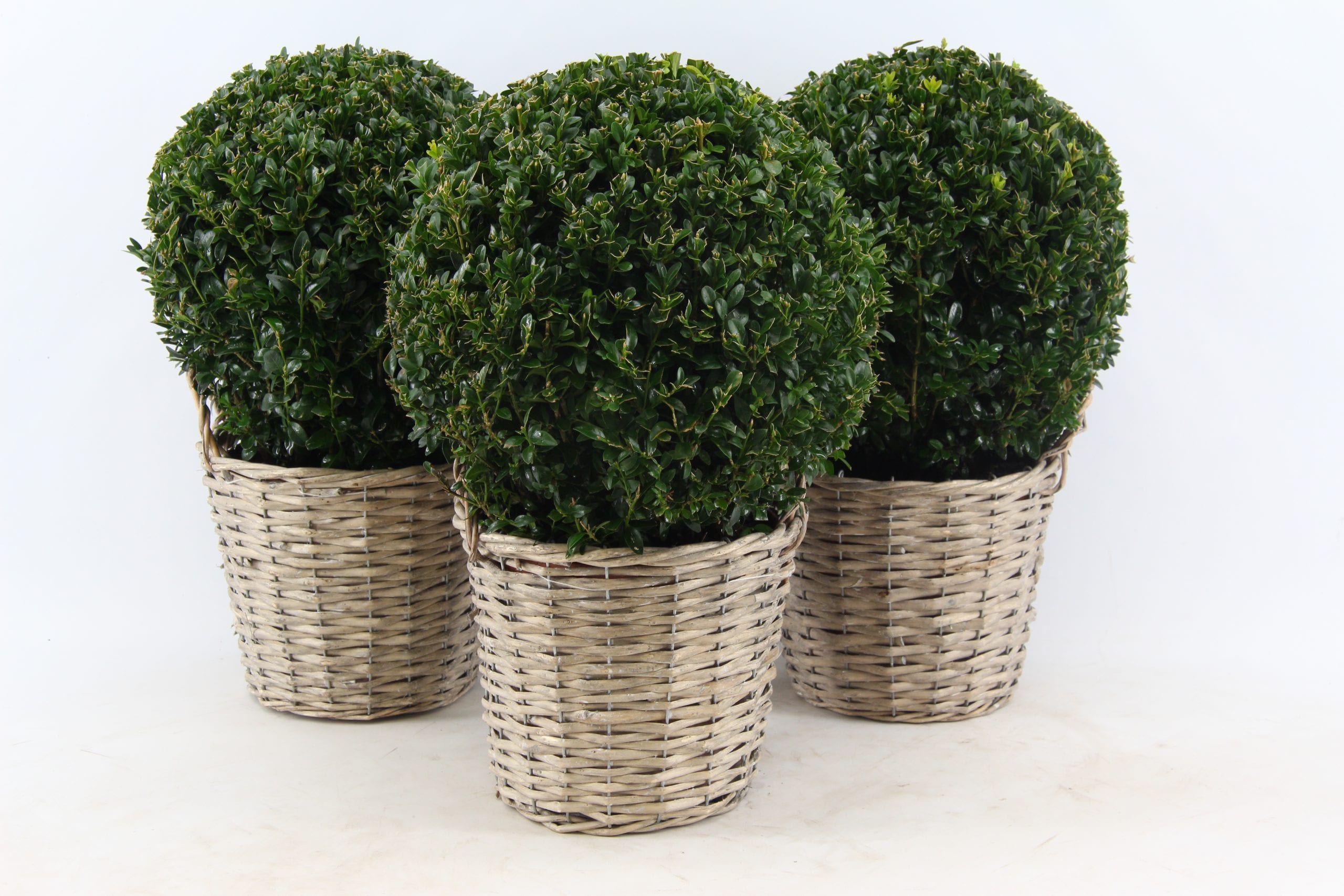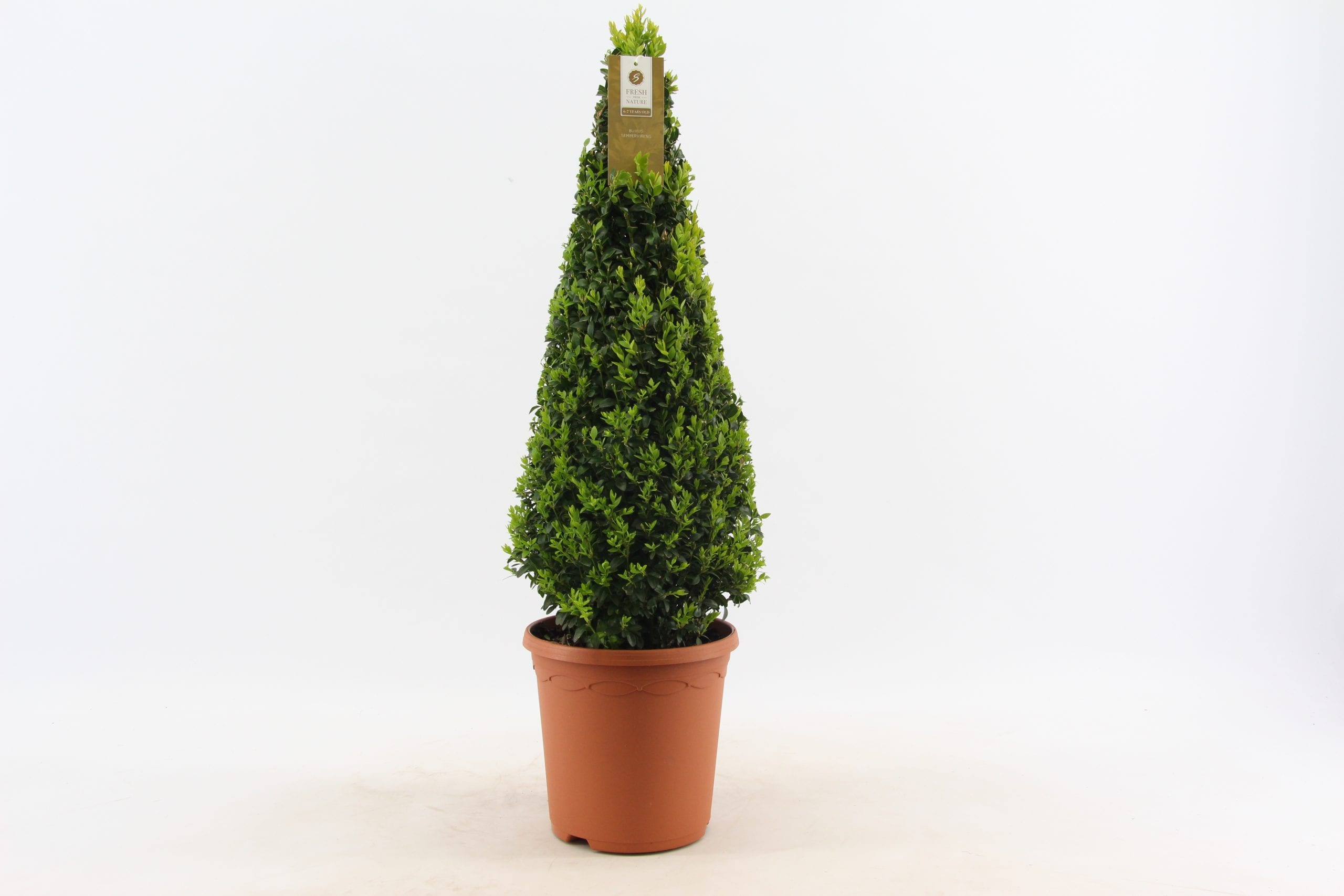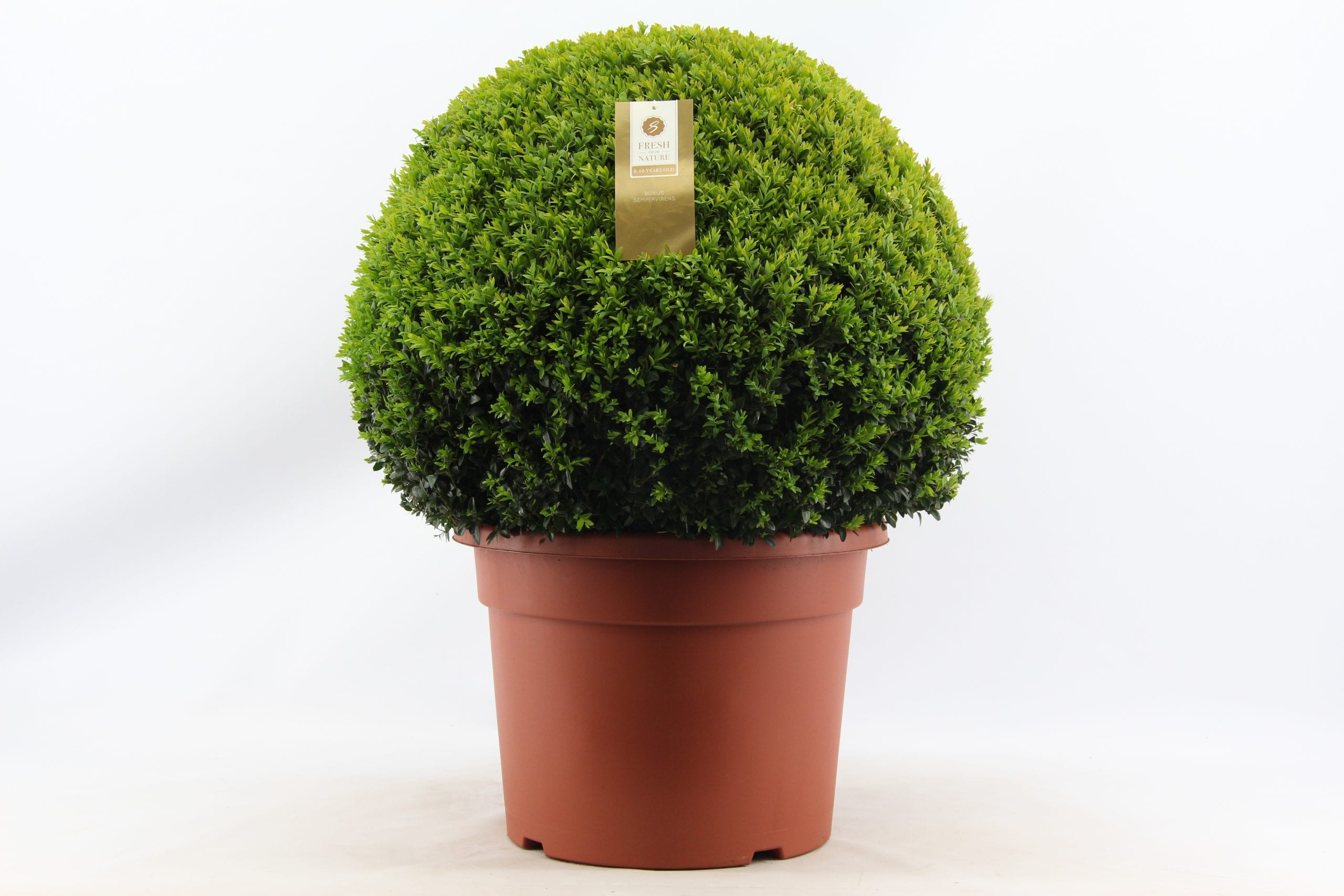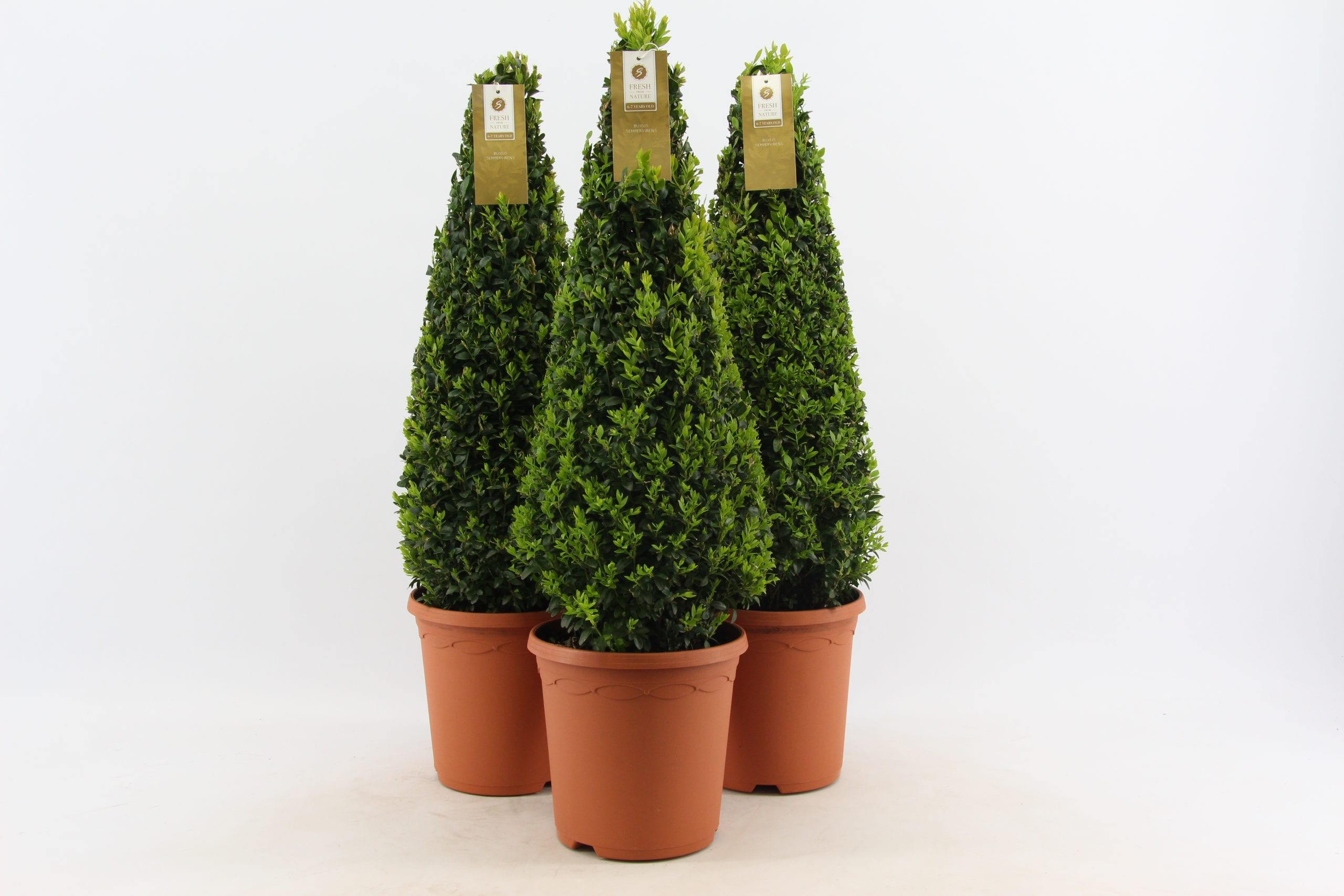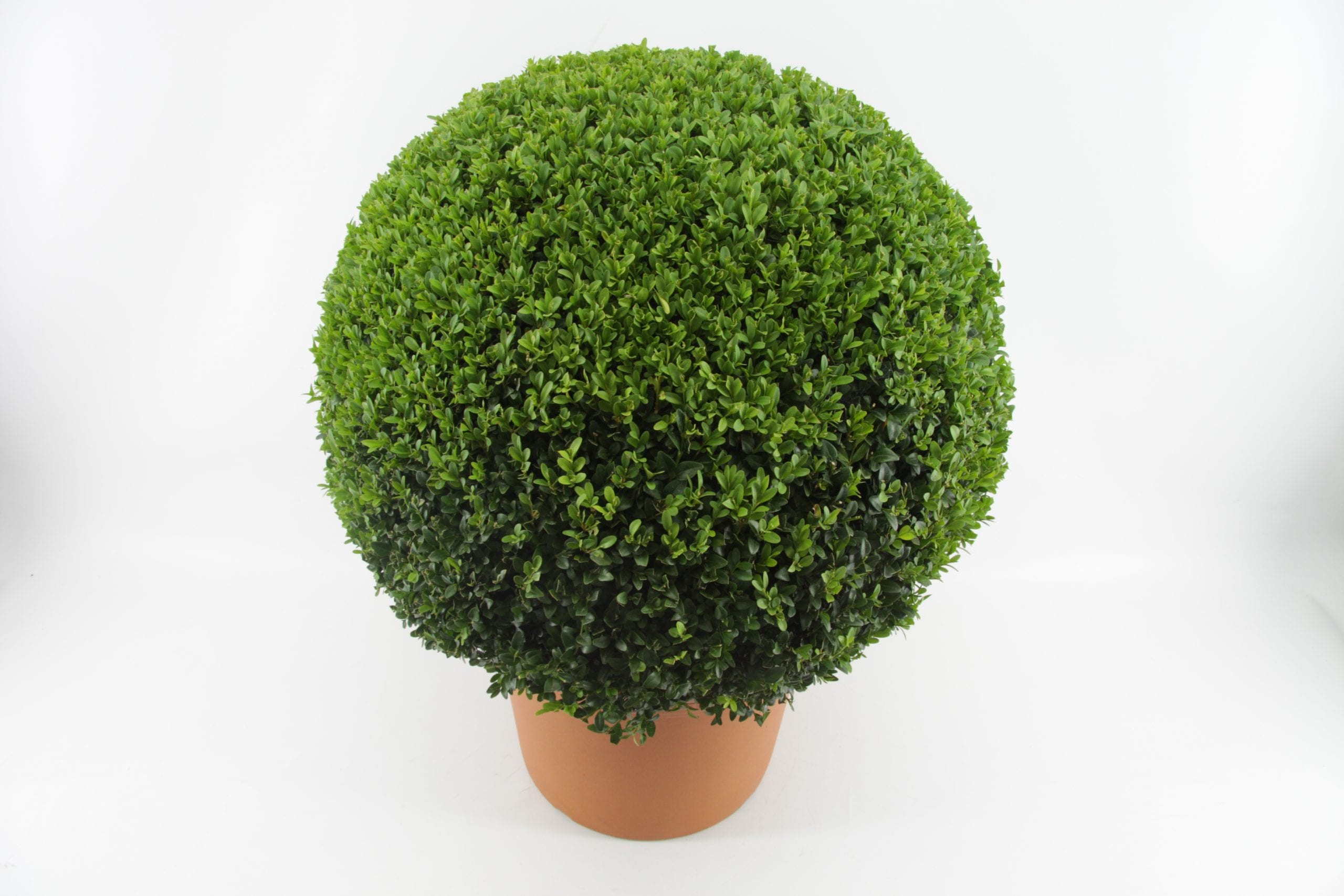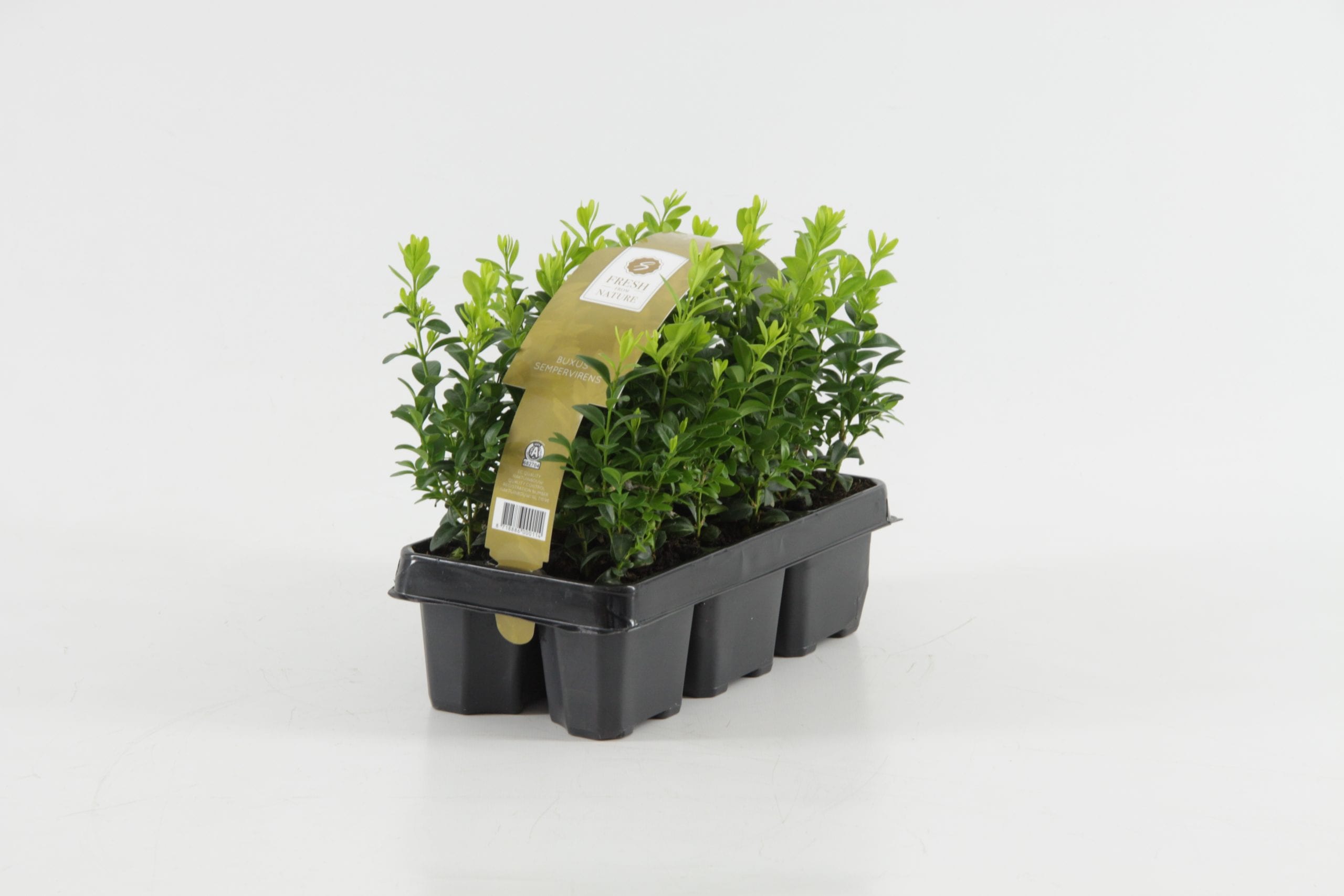Buxus Sempervirens
Pot size: 9 – 55
Available: week 1 – 52
Few bushes are as decorative as a box. For example, you can use it to create beautiful hedges that really give any garden, large or small, a stylish appearance. They also stay fresh green all year round. Do you want to create your own piece of art? No problem! The boxwood is excellent for pruning in all shapes. You will also find many forms ready-made at garden centers and florists. In short: the boxwood is an eye-catcher for any garden, even if you place it in a decorative pot on your terrace or balcony.
Care tips
The boxwood requires hardly any care and can be used in both sunny and shady places and is easy to plant. It is a matter of “digging a hole”, boxing in, pushing and watering (for a hedge you use about seven plants per meter). To allow the boxwood to root quickly, it is wise to add special boxwood soil. Pamper the plant with box food. That way you keep it extra strong. Pruning is done at the end of May to get it back in shape. The second time you prune the plant early September and in between you can also prune your box a few times. The more often you prune a boxwood, the fuller it becomes. This is especially important for larger specimens. Tip! Always prune the box on a cloudy day, because the sun can burn the leaves.
Facts
The boxwood has been in the top 10 of the most sold garden plants for years. Not for nothing, because this welcome guest in many gardens is hardy and stays green all year round. They used to be enthusiastic about the boxwood too. It is known that the Romans already used them in their gardens. Even roots of boxwood plants have been found in Pompeii in Italy. The French and English also knew how to handle the box. They made impressive gardens that you can still see at many palaces, such as the famous gardens of Versailles. Many monasteries made box hedges as a partition for their vegetable limbs and flowers. Nice to try it yourself, because it gives your (vegetable) garden a nice appearance. The boxwood is also called palm tree, while the plant really has nothing to do with the palm. Thanks to the use of the branches at Palmpasen it got this name.

